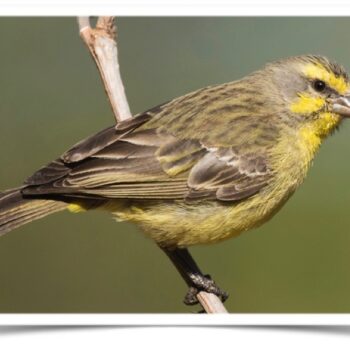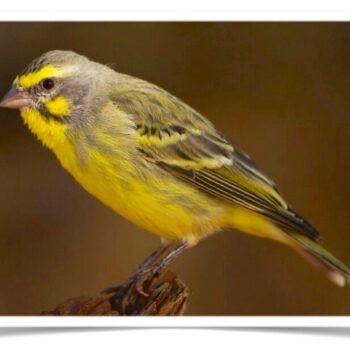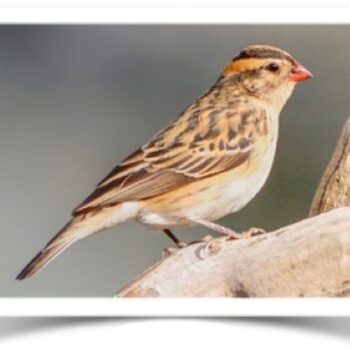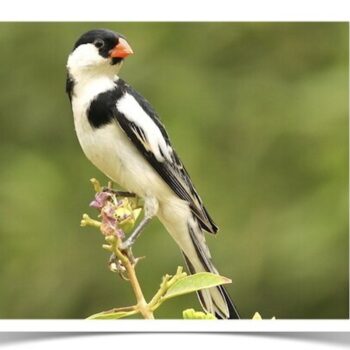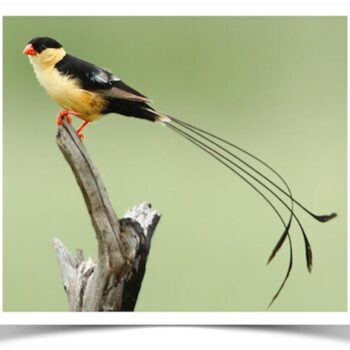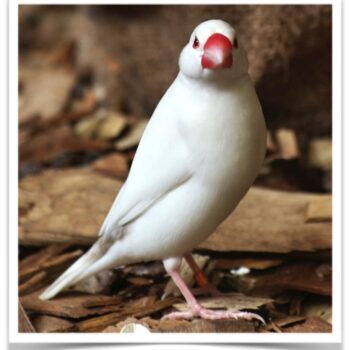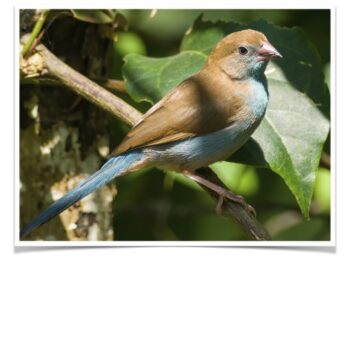The Yellow Crown Weaver or Yellow Crown Bishop (Euplectes afer) is a species of passerine bird in the family Ploceidae native to Africa south of the Sahara. It is highly sexually dimorphic in its breeding season, during which the male adopts a distinctive yellow and black plumage, contrasting with the female’s predominantly brown coloration. The yellow-crowned bishop was first described by the German naturalist Johann Friedrich Gmelin in 1789. Alternate common names include: Golden bishop, Napoleon bishop, Napoleon weaver, black-winged golden bishop, goudgeelvink (in Afrikaans), Napoleonwever (in Dutch), euplecte vorabé (in French), Napoleonweber (in German), and obispo coronigualdo (in Spanish). The Weaver lives in flocks with both males and females. In non-breeding seasons the flocks may contain weaversand sparrows.
Geography: Africa
Song / Call: Click here to listen to the Yellow Crown Weaver
Size / Weight: 5.5″ / 11 to 20 g
Sexing: During the breeding season it is sexually dimorphic—that is, the observable characteristics of the males become more apparent.
* During the breeding season, the male has distinctive golden yellow and black plumage. However, when not in breeding season, the male’s coloring is the same as a female’s. The male’s bill is horn in color, as is the female’s, when in non-breeding plumage.
Temperament: When not breeding, these Yellow Crown Weaver birds for sale happily live in a mixed aviary with other birds of various sorts. When they come around to breeding time, the male can be defensive of his nests so needs to be monitored, especially if there are smaller birds in the enclosure. The problems mainly occur if the aviary is overcrowded or if there aren’t enough plants to make them feel safe and comfortable.
Breeding: Each male will build two or more oval nests with a top opening, attracting a female to each nest by flaring their yellow feathers and display flights. Nests are built among standing stems of grasses or sedges or shrubs. Bent over stems of live grass help hide the nest. The female will lay from two to four white eggs.
Diet: Classic Finch Seed, Australian Blend Goldenfeast, Millet Sprays, Cuttlefish Bone, Mineral Grit, apples, insects
DNA Testing
If there is no gender option listed for a bird on our website, that particular species is ‘monomorphic’, which means we’re unable to determine gender without purchasing DNA testing. DNA testing is an additional $149 per bird to guarantee preferred gender. DNA testing may add an additional 3-6 plus weeks to estimated delivery time to allow for gender results. See our FAQs for more info.








